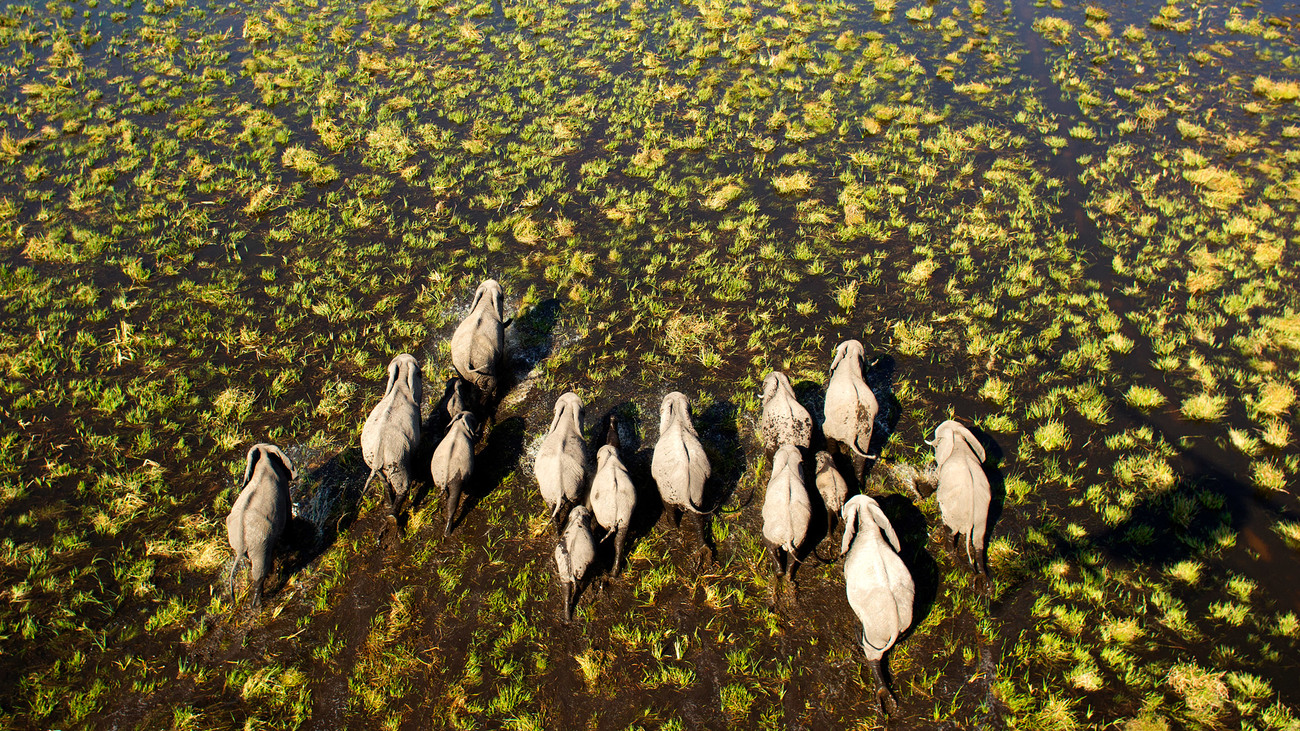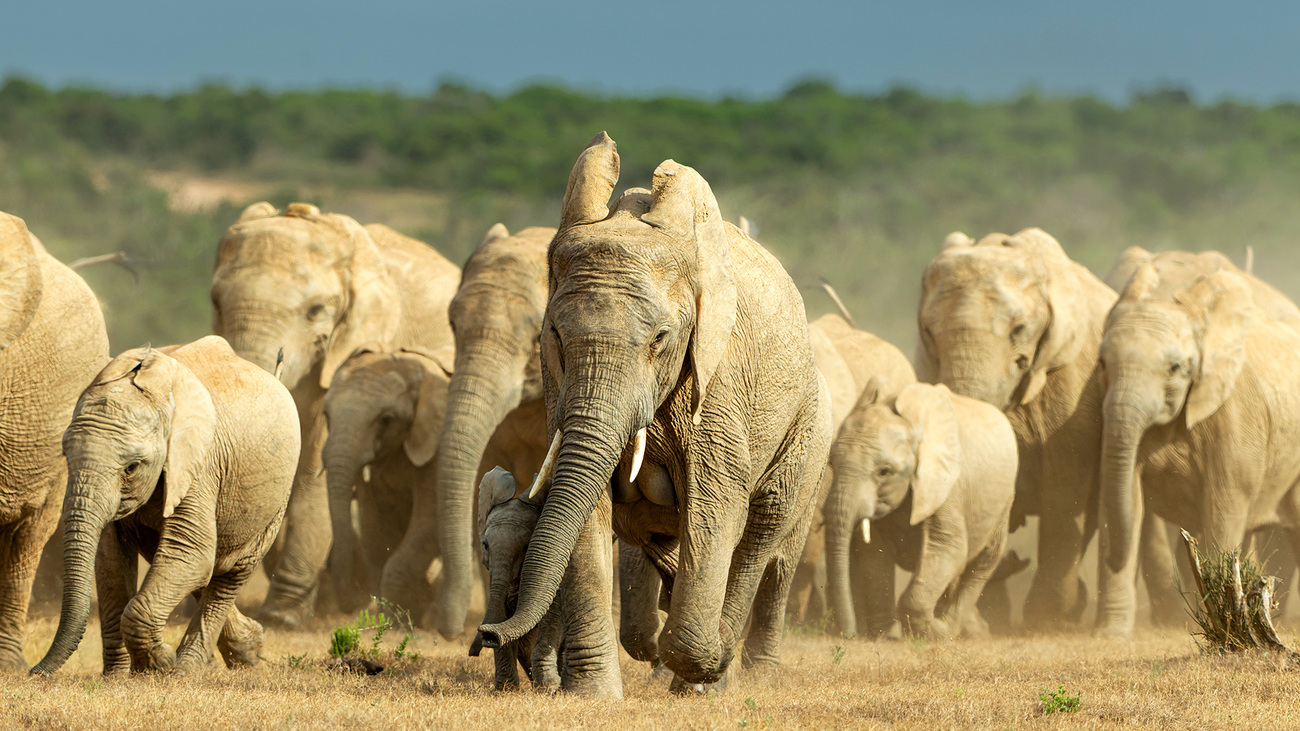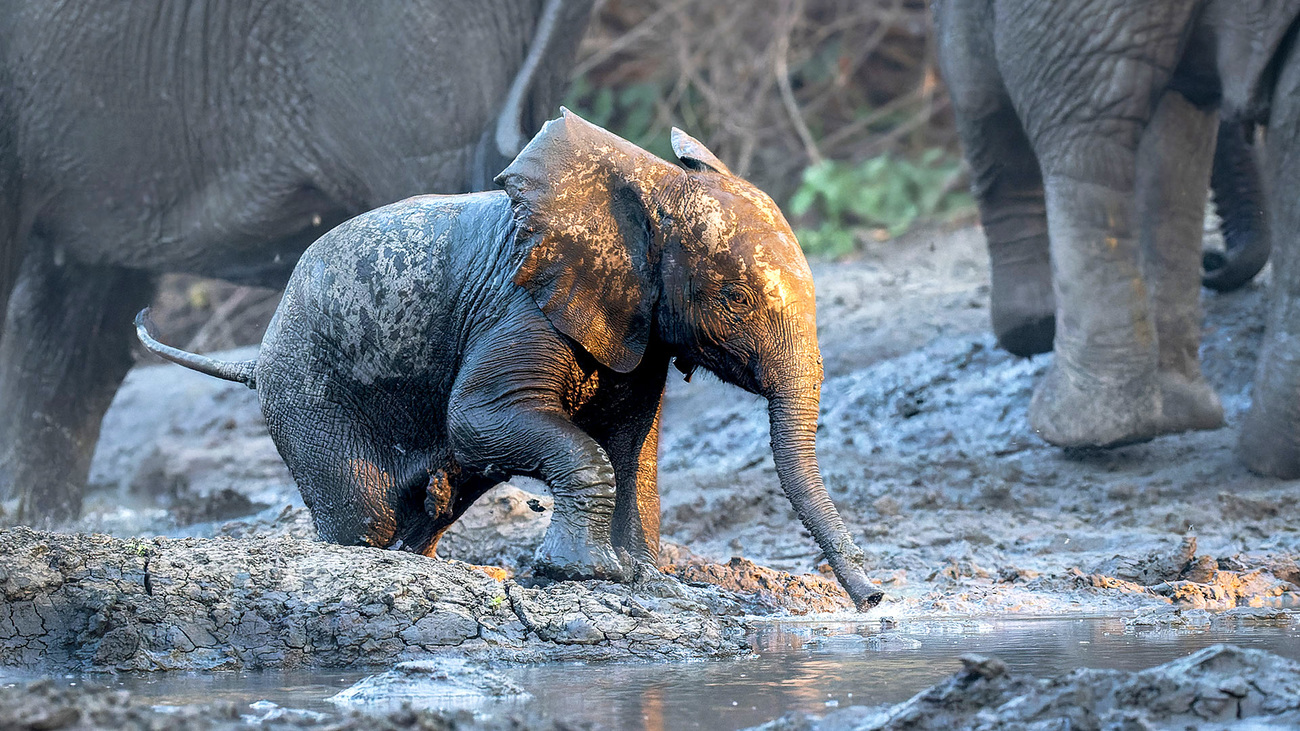Jason Bell
Executive Vice President - Strategy, Programmes & Field Operations
If there's an individual animal in distress, why would you not make every effort to try and rescue it?
Connectivity—the way forward for Africa’s savannah elephants

Over 400,000 elephants live and move within Africa’s increasingly fragmented savannah landscapes that sprawl across half the continent. Only 10% of this vast swathe is protected. Savannah regions are also home to half a billion people, frequently leading to high levels of conflict between humans and wildlife, particularly elephants.
So, can elephants and people coexist and thrive? And can conservation actions mitigate these threats? A simple ‘yes’ answers both of these fundamental questions, thanks to more than 20 years of research by a team of scientists funded by IFAW.
Their work shows that conservation measures have successfully stopped declines in the savannah elephant population across southern Africa, where more than 70% of these great grey leviathans live. Today, there are the same number of elephants as there were 25 years ago—a rare conservation win when the planet’s biodiversity is rapidly declining. But the pattern is not consistent. Some areas, such as southern Tanzania, eastern Zambia, and northern Zimbabwe, have experienced severe declines due to ivory poaching, while populations in other regions, like northern Botswana, are stable.
‘Our recently published study is the most comprehensive analysis of growth rates for any large mammal population in the world,’ said co-author Rob Guldemond, director of the Conservation Ecological Research Unit (CERU) at the University of Pretoria in South Africa.

Africa’s existing national parks and wildlife reserves, and where they lie, play a significant role in determining how elephant populations grow or decline across southern Africa. The evidence collected over more than two decades indicates that the long-term solution to elephant survival not only requires strictly protected wildlife havens but also that they are connected to allow elephant populations to move and stabilise naturally.
This cannot be overemphasised, given that core conservation areas contain only 48% of the region’s elephants. The majority move through adjacent buffer areas where, across most of Africa, habitat degradation, human-wildlife conflict, and, in some instances, heavy, chronic poaching for ivory seriously threaten many elephant populations.
While such poaching and other illegal activities are imposed by socioeconomic rather than ecological conditions, they may drive elephant growth patterns in some buffer populations. For example, Kafue, Niassa, Luangwa, and Zambezi in the northern reaches of southern Africa have been hard hit by ivory poaching. Such illegal activities are unlikely to ease any time soon and have caused steep declines in elephant numbers.
Across two-thirds of the conservation clusters studied, where 60 percent of Africa’s savannah elephants live, the scientists found that elephant populations are stable or increasing.
Considering savannah elephants are globally listed as endangered, southern African elephants show a low but remarkably stable growth pattern, notwithstanding the threats they face and that almost half these elephants live alongside humans in buffer areas.
Without buffer zones, elephant populations in isolated, strictly protected areas may flourish. But such ‘fortress conservation’ has its downsides. ‘Unchecked growth isn't necessarily a good thing,’ says study co-author Stuart Pimm, the Doris Duke Professor of Conservation at Duke University in North Carolina.
‘Rapidly increasing populations can outgrow and damage their local environment and prove hard to manage—introducing a threat to their long-term stability,’ says Pimm. Also, such undesirable outcomes require unpalatable management interventions—contraception or culling, for example—while the damage to habitats may be severe and long-lasting.

Buffer areas alongside core protected areas allow some activities such as sustainable farming, forestry, or trophy hunting and are, therefore, crucial for many apparent reasons. But their conservation value is even greater when they are connected to other buffer and core areas, and herds are allowed to move naturally.
For example, elephants can quickly move into a nearby buffer or core area if they feel threatened. And, when the perceived danger has passed, they can just as quickly move back. Similarly, if population growth in one area places pressure on resources, elephants can move into less pressured areas. This ability to move freely from one area to another is also essential, given seasonal shifts in food and water availability. And so, connectivity allows elephant populations that might otherwise be isolated to interact on some level, forming what is known as a metapopulation. Their freedom to move drives stability in the core conservation areas and variability in buffer zones, largely removing the need for costly, outdated human intervention strategies.
‘What’s crucial is that you need a mix of areas with more stable core populations linked to more variable buffer areas,’ said lead author Ryan Huang, a Duke Ph.D. now doing postdoctoral research at CERU.
‘These buffers absorb immigrants when core populations get too high, but also provide escape routes when elephants face poor environmental conditions or other threats such as poaching,’ said Huang.
Connecting protected areas allows a natural equilibrium to occur without human intervention, sparing conservationists from using their limited resources to maintain balance. The evidence for doing so is both comprehensive and compelling.
‘Calling for connecting parks isn’t something new. Many have done so,’ Huang said. ‘But surprisingly, there has not been a lot of published evidence of its effectiveness so far. This study helps quantify why this works.’
For more than 20 years, IFAW has worked with the University of Pretoria’s CERU to better understand elephant populations across Africa. This collaboration is embodied in IFAW's Room to Roam initiative—a visionary approach to elephant conservation based on robust, science-informed principles that are credible and deliver results. The aim is to ensure stable and persistent elephant populations long into the future—with little to no human interference.
Connecting core elephant areas and securing these habitats will create safe passages for elephants and other wildlife to move freely within their home ranges in East and southern Africa. Such a ‘connectivity conservation’ approach will bring greater biodiversity, enhance landscape resilience to climate change, and create a future where animals and communities can coexist and thrive.
Jason Bell
Executive Vice President - Strategy, Programmes & Field Operations
If there's an individual animal in distress, why would you not make every effort to try and rescue it?
Every problem has a solution, every solution needs support.
The problems we face are urgent, complicated, and resistant to change. Real solutions demand creativity, hard work and involvement from people like you.
Unfortunately, the browser you use is outdated and does not allow you to display the site correctly. Please install any of the modern browsers, for example:
Google Chrome Firefox Safari